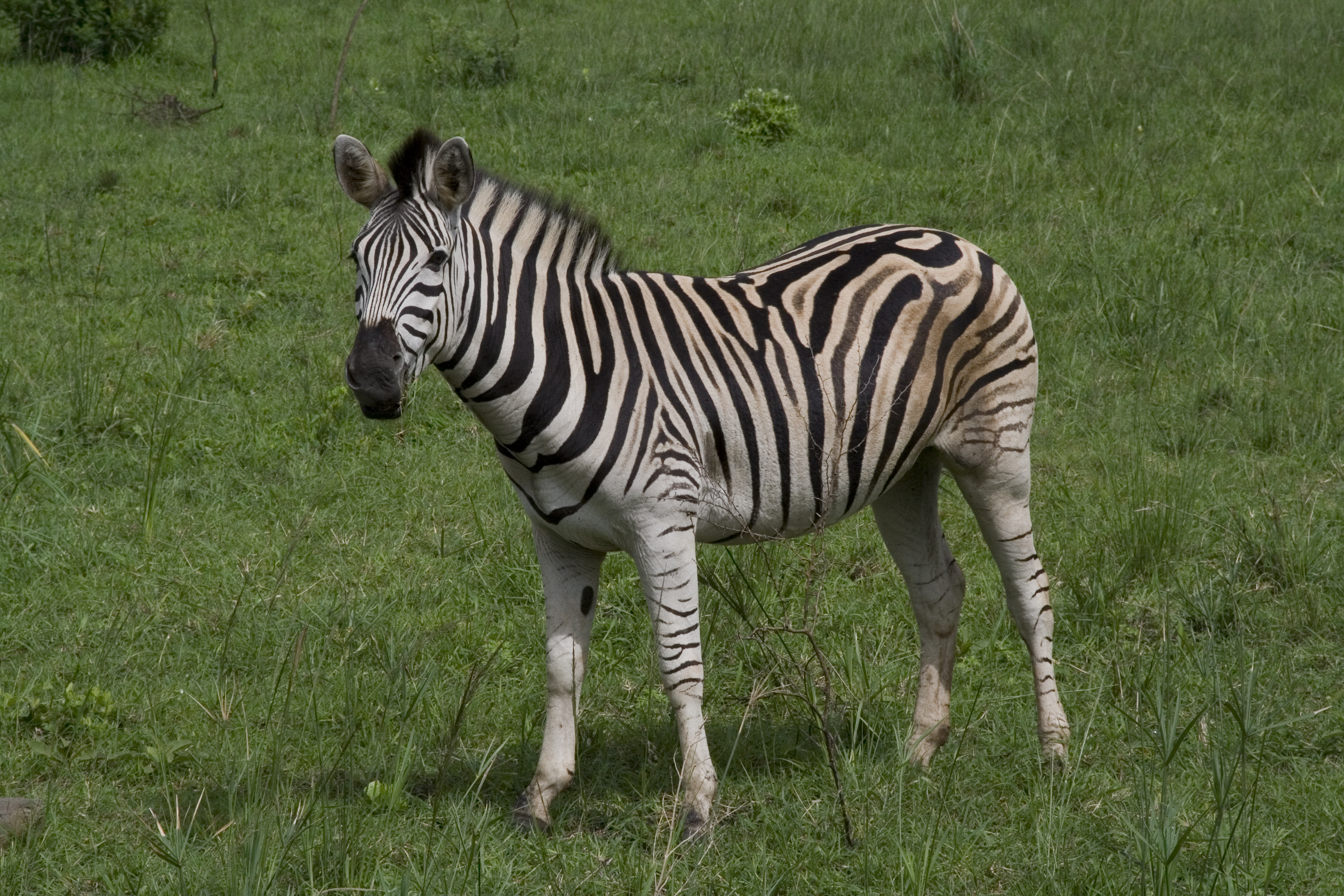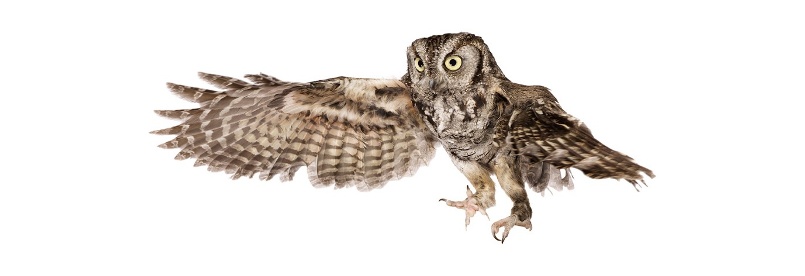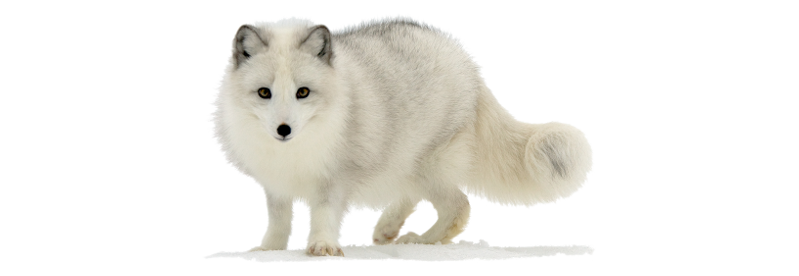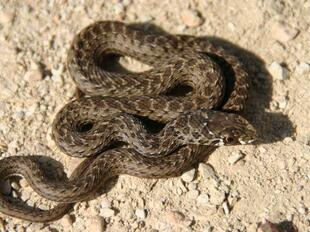
Zebra(Equus quagga)
Phylum —chordata
Class — mammalia
Order — perissodactyla
Family — equidae
Genus – equus
Appearance
The plains zebra stands at a height of 127–140 cm (4.17–4.59 ft) with a head-body length of 217–246 cm (7.12–8.07 ft) and a tail length of 47–56.5 cm (1.54–1.85 ft). Males weigh 220–322 kg (485–710 lb) while females weigh 175–250 kg (386–551 lb). It is dumpy bodied with relatively short legs and a skull with a convex forehead and a somewhat concave nose profile. The ears are upright and have rounded tips. The plains zebra has an erect mane along the neck and a tuft of hair at the end of the tail.
Habitat
The plains zebra's range stops short of the Sahara from South Sudan and southern Ethiopia extending south along eastern Africa, as far as Zambia, Mozambique, and Malawi, before spreading into most southern African countries.
Behavior
Plains zebras are nomadic and non-territoral, home ranges vary from 30 km2 (12 sq mi) to 600 km2 (230 sq mi). They are more active during the day and spend most of their time feeding. Other activities include dust bathing, rubbing, drinking and intermittent resting which is very brief. At night, zebra activity is subdued except when threatened by predators. They may rest or sleep laying down, while one individual keeps guard.
The plains zebra is highly social and usually forms small family groups called harems, which consist of a single stallion, several mares, and their recent offspring. The adult membership of a harem is highly stable, typically remaining together for months to years. Groups of all male "bachelors" also exist. These are stable groups of up to 15 males with an age-based hierarchy led by a young male. These males stay in their groups until they are ready to start a harem. The bachelors prepare for their adult roles with play fights and greeting/challenge rituals, which take up most of their activities.
Diet
Plains zebras primarily feed on grass.
Reproduction
The stallion mates with all his mares. The female signals her readiness for copulation by straddling her legs and raising her tail. The gestation period lasts around a year, and a single young is produced. Mares may give birth to one foal every 12 months. The birthing peak is during the rainy season. A mare gives birth within the vicinity of her group and while laying down on her side. The newborn foal weighs 30–35 kg (66–77 lb) and the afterbirth is rarely consumed.
A newborn is capable of standing almost immediately and starts to eat grass within a week. At the moment of birth, a mother zebra keeps any other zebra away from her foal, including the stallion, the other mares, and even the previous offspring. Later, though, they all bond. Within the group, a foal has the same rank as its mother. The stallion is generally intolerant of foals that are not his and zebras may practice infanticide and feticide.
A foal is usually weaned at around 11 months, but may suckle for longer. Females reaches puberty at 2.5 years while males do so at 5–6 years. Young male zebras eventually leave their family groups as the relationships with their mothers has faded after the birth of a sibling. The young stallion then seeks out other young stallions for company. Young females may stay in the harem until they are abducted by another stallion.
In captivity
In captivity zebras can live for up to 40 years.
Keeping zebras in captivity is much the same as keeping other wild horses and wild donkeys. Zebras are quite unpretentious, although they are native to Africa, they normally tolerate the European climate. But for comfort, they should be closed from the rain and wind rooms, if possible, warm stalls. Theycan be fed regular horse food.
It is necessary to make sure that the animals do not overeat. This is especially true for human food: bread, chips, sugar, corn flakes. Cucumbers grown in your own greenhouse are not the best option for a zebra treat. From such food, wild animals get sick, their water-salt balance is disturbed, and treatment is quite long and expensive.
In captivity, wild horses do not experience the usual dangers, so with good care they live longer than in nature. On the other hand, animals live on a very limited territory, do not have the ability to independently determine the composition of the herd, which can not but affect their well-being. If it is possible, care should be taken to ensure that the animals move as much as possible, and adult stallions should be separated so that they do not arrange fights.
Keeping zebras in captivity, special attention should be paid to the hooves. In nature, hooves are worn down on the ground during movement. But in captivity, the movement of the animal is kept to a minimum. If the hooves are not sharpened, they become deformed, become ugly, and walking begins to bring pain to the Zebra. Therefore, from time to time, it is necessary to trim and sharpen part of the hooves, which can only be carried out under general anesthesia.
 Russian
Russian
 English
English
























